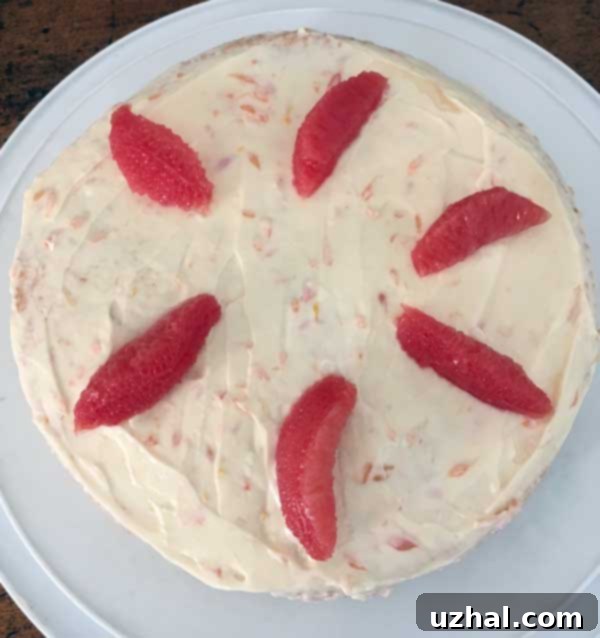Experience the Magic: Authentic Brown Derby Grapefruit Cake Recipe (Disney’s Hollywood Studios Classic)
The Brown Derby restaurant was once an unparalleled hot spot in the vibrant landscape of old Hollywood, Los Angeles. Instantly recognizable for its whimsical hat-shaped architecture, this establishment wasn’t just a dining destination; it was a cultural landmark where celebrities gathered and culinary legends were born. While owner Bob Cobb famously created the iconic Cobb Salad, it’s another exquisite item from the menu that continues to captivate dessert enthusiasts: the legendary Brown Derby Grapefruit Cake. This article delves into the history, evolution, and a cherished copycat recipe for this remarkably refreshing and beloved dessert.
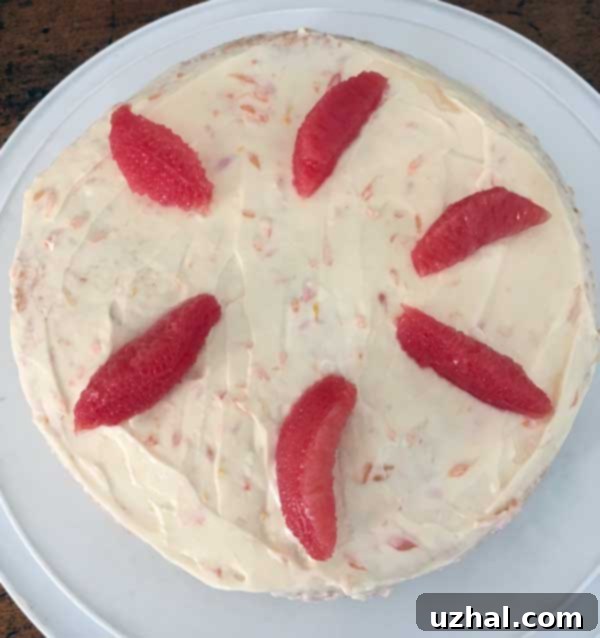
My fascination with this unique cake began years ago, sparked by Jean Anderson’s “20th Century Cookbook.” Her vivid descriptions painted a picture of the restaurant’s historical significance and offered a glimpse into the recipe for this culinary masterpiece. Decades later, the magic of the Brown Derby was lovingly recreated by Disney, who opened their own themed restaurant at Hollywood Studios. True to form, the famous Grapefruit Cake took its rightful place on the menu, where it remains a treasured offering. Disney describes their version as a delicate vanilla sponge cake, generously soaked in grapefruit syrup and crowned with a luscious cream cheese icing.
The Legend of the Brown Derby Grapefruit Cake
In the glamorous era of Hollywood’s Golden Age, the Brown Derby was more than just a restaurant; it was a symbol of sophistication and an essential stop for film stars, studio moguls, and discerning diners. Amidst the glitz and glamour, the Grapefruit Cake emerged as a surprisingly light and refreshing dessert, perfectly suited to the warm Southern California climate. Its unique citrus flavor profile offered a delightful contrast to richer, heavier desserts, quickly establishing it as a signature item. The cake’s appeal lay in its delicate balance: a moist, tender crumb, the bright tang of grapefruit, and a creamy, not-too-sweet frosting. It was a dessert that felt both indulgent and invigorating, a true taste of Hollywood elegance.
Disney’s Homage: The Brown Derby at Hollywood Studios
When Disney set out to bring the spirit of old Hollywood to life at Hollywood Studios, recreating the Brown Derby experience was a natural choice. Their meticulous attention to detail extended to the menu, and the Grapefruit Cake was an absolute must. While the original recipe for the Brown Derby Grapefruit Cake is likely a closely guarded secret, Disney’s version has become a beloved interpretation. They serve a vanilla sponge cake, infused with a vibrant grapefruit syrup, and finished with a classic cream cheese frosting. It’s a slightly different take, yet it successfully captures the essence of the original’s light and refreshing character.
My personal recipe, which I believe comes quite close to the original spirit, features a small chiffon cake. This cake is horizontally split and generously filled with fresh grapefruit segments, then enveloped in a cream cheese frosting flecked with grapefruit zest. While Disney’s newer iteration with its grapefruit syrup sounds intriguing and is still on my list of desserts to try, I have been so consistently pleased with my current recipe that I haven’t felt the immediate rush to experiment further. This version offers a delightful combination of moist cake, zesty fruit, and creamy frosting that truly honors the cake’s legacy.
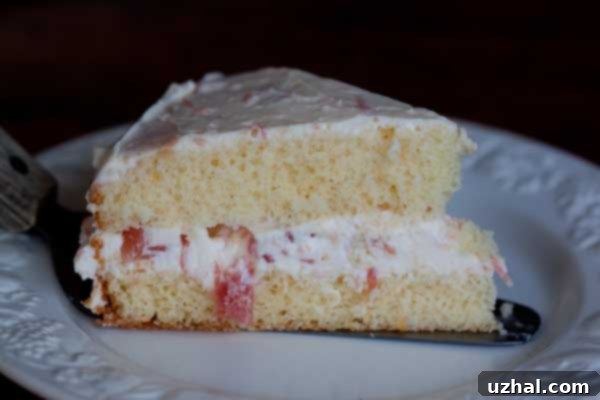
To Grease or Not to Grease for Chiffon Cake: A Baking Conundrum
One of the most debated aspects when baking chiffon cake, especially for this recipe, revolves around pan preparation. Chiffon cakes are unique; their airy, cloud-like texture relies heavily on the egg white foam clinging to the sides of an ungreased pan as it rises. This adhesion allows the cake to climb high, resulting in its characteristic lofty structure. Traditionally, chiffon cakes are baked in ungreased tube pans, often inverted after baking to prevent collapse during cooling.
When I first embarked on recreating this cake, clear visual references or definitive interpretations of the recipe were scarce. Thankfully, the baking community has since provided numerous versions, offering more guidance. Disney’s approach, for instance, suggests an ungreased 10-inch pan, adhering to the classic chiffon cake technique. However, a highly-rated recipe by celebrated chef Paula Deen, which is otherwise quite similar, calls for baking in a *greased* 9-inch round pan. This presented a significant question: which method was truly correct for a Brown Derby-style Grapefruit Cake intended to be layered and frosted?
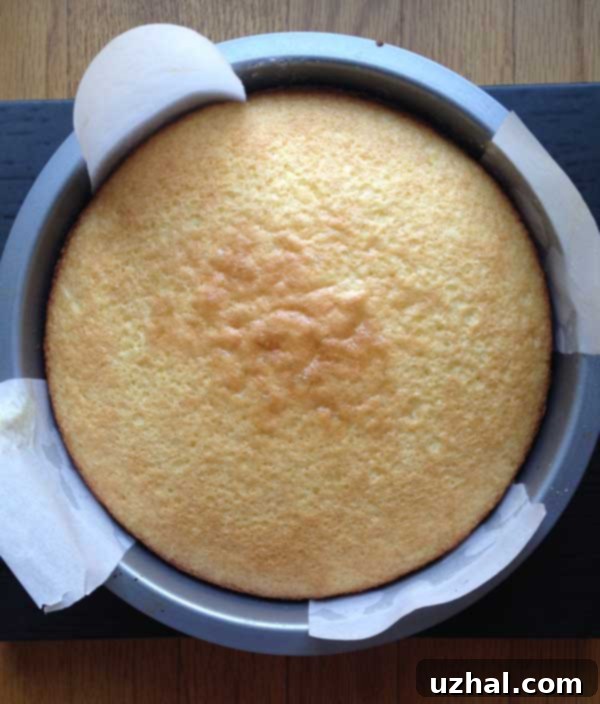
Greased vs. Ungreased: My Experimental Findings
To resolve this pan preparation dilemma, I decided to conduct my own experiment, baking the cake using both methods. First, I prepared the cake in an ungreased 9-inch springform pan, expecting a traditional chiffon-style rise. Next, I used a standard 9×2 inch round cake pan, which I thoroughly greased and lined with parchment paper, then dusted with flour. The results were enlightening.
As anticipated, the version baked in the ungreased springform pan rose noticeably higher and produced a lighter, more ethereal crumb. This is the hallmark of a true chiffon cake, where the batter climbs freely up the pan walls. However, the cake baked in the generously greased and parchment-lined pan, while slightly denser, proved to be more practical and, surprisingly, even tastier for this particular application. Its slightly firmer texture made it easier to handle when splitting into layers, and it seemed to better support the generous cream cheese frosting and grapefruit segments without compressing or shifting. For a layer cake that needs to hold its form, the slight density provided by the greased pan offered a welcome stability that enhanced the overall eating experience. This experiment taught me that while traditional chiffon techniques are valuable, sometimes a slight adaptation yields a more desirable outcome for specific dessert styles.
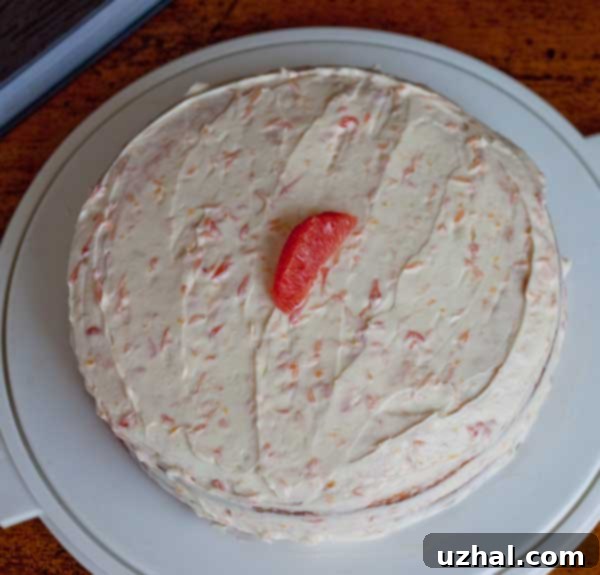
Canned Grapefruit vs. Fresh: The Flavor Debate
Another crucial decision when making this cake centers on the grapefruit itself. The recipe explicitly calls for grapefruit zest, which inherently requires at least one actual fresh grapefruit. This then begs the question: why bother with canned grapefruit when you’re already handling fresh fruit? Why not simply section a fresh grapefruit and use those pieces?
After experimenting with both options, I can surmise the rationale behind using canned grapefruit. Canned grapefruit sections are often packed in light syrup, making them slightly sweeter and more uniform in shape. They also offer a significant convenience factor, as the tedious task of removing the membranes from each segment has already been done. This saves considerable time and effort in the kitchen.
However, my preference firmly leans towards fresh grapefruit. The vibrant, slightly tart, and inherently brighter flavor of freshly segmented grapefruit elevates the cake to another level. While it requires a bit more effort to peel and segment the fruit, the superior taste and texture are well worth it. Fresh grapefruit provides a delightful pop of natural citrus that canned versions, however convenient, simply cannot replicate. For a truly authentic and outstanding Brown Derby Grapefruit Cake, I highly recommend using fresh grapefruit sections. Either way, this delightful little cake remains incredibly fun to make and wonderfully refreshing to eat, making it a perfect dessert for any occasion, especially in warmer months.
The Signature Cream Cheese Frosting and Delicate Cake Texture
The Brown Derby Grapefruit Cake features a cream cheese frosting that is notably light and airy, distinguishing itself from many traditional butter-heavy cream cheese frostings. This particular recipe omits butter, resulting in a frosting that is wonderfully fluffy and allows the bright citrus notes of the grapefruit to shine through without being weighed down by excessive richness. This lighter frosting perfectly complements the cake’s crumb, which is also characterized by its lean and tender structure. The cake itself is not overly sweet, providing a delicate canvas for the robust grapefruit flavor.
Speaking of flavor, the cake boasts a significant citrus presence, a hallmark of its refreshing character. While I did add a hint of vanilla extract—a personal preference that I believe enhances almost any baked good—I otherwise kept the original flavor profile largely intact. This minimalist approach allows the natural essence of the grapefruit to be the star. That being said, I am quite certain that the version served at the actual Brown Derby, both historically and at Disney today, likely has its own subtle nuances. Therefore, a trip to The Brown Derby at Hollywood Studios remains on my culinary bucket list, eager to experience the definitive taste of this iconic dessert firsthand and compare it to my cherished homemade rendition.
- A Much Easier Grapefruit Pie
- Pink Grapefruit Pie
- Grapefruit Coconut Angel Pie Picture
- Derby Day Cookies aka Bourbon Cookies
- Ruby Red Grapefruit Bars
Baking Tips for a Perfect Grapefruit Cake
To ensure your Brown Derby Grapefruit Cake turns out perfectly, here are a few essential tips:
- **Sift Your Flour:** As mentioned in the recipe notes, accurate flour measurement is crucial for chiffon cakes. If you don’t have a kitchen scale, sifting cake flour before measuring ensures it’s light and aerated, preventing a dense cake.
- **Gentle Folding:** The airy texture of chiffon cake comes from the carefully whipped egg whites. When folding the egg whites into the batter, do so gently to avoid deflating them. This preserves the delicate air pockets that give the cake its signature light crumb.
- **Room Temperature Ingredients:** Ensure your egg yolks, grapefruit juice, and cream cheese are at room temperature. This helps them emulsify better and creates a smoother, more consistent batter and frosting.
- **Don’t Overbake:** Chiffon cakes can dry out quickly if overbaked. Keep an eye on the cake towards the end of the baking time. It should spring back lightly when gently touched in the center.
- **Cool Completely:** Allow the cake layers to cool completely before frosting. Attempting to frost a warm cake will result in melted frosting and a messy presentation.
- **Adjust Frosting to Taste:** The amount of grapefruit zest and juice in the frosting can be adjusted to your personal preference for citrus intensity. Feel free to taste and add more if you desire a bolder grapefruit flavor.
Serving and Enjoying Your Classic Dessert
Once your Brown Derby Grapefruit Cake is assembled and beautifully frosted, it’s ready to be the star of your dessert table. Garnish with a few extra fresh grapefruit segments or a sprig of mint for an elegant touch. This cake is best served chilled, allowing the flavors to meld and the frosting to set. It makes a stunning centerpiece for brunches, afternoon tea, or as a refreshing finish to any meal. Each bite transports you to the golden era of Hollywood, offering a taste of history alongside a burst of bright, zesty flavor. Enjoy the satisfaction of recreating a legendary dessert that continues to charm palates decades later.
Recipe
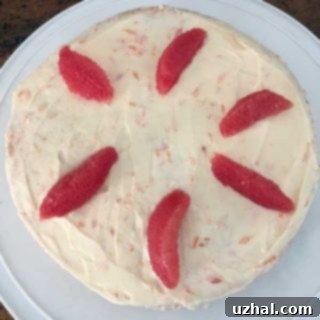
New Brown Derby Grapefruit Cake Clone
Anna
Pin Recipe
Ingredients
- 1 ½ cups sifted cake flour (see note) (145 grams)
- ¾ cup granulated sugar (145 grams)
- 1 ½ teaspoons baking powder
- ½ teaspoon salt
- ¼ cup water
- ¼ cup vegetable oil
- ¼ teaspoon vanilla extract
- 1 teaspoon grapefruit zest I used closer to 2
- 3 tablespoons grapefruit juice
- 3 large egg yolks
- 3 large egg whites
- ¼ teaspoon cream of tartar
Grapefruit Cream Cheese Frosting:
- 16 ounces cream cheese softened
- 1 tablespoon grapefruit juice
- 1 teaspoon grapefruit zest
- 1 cup powdered sugar sifted
- 6 to 8 drops yellow food coloring optional
- 16 oz can grapefruit sections well drained (or use fresh grapefruit sections)
Instructions
-
Preheat oven to 350 degrees F (175 C). Lightly grease a 9×2 inch round cake pan and line the bottom with a circle of parchment paper. Dust the greased and lined pan lightly with flour, tapping out any excess.
-
In a large mixing bowl, whisk together the sifted cake flour, granulated sugar, baking powder, and salt until well combined.
-
Create a well in the center of the dry ingredients. Add the water, vegetable oil, vanilla extract, grapefruit zest, grapefruit juice, and egg yolks to the well. Using a heavy-duty scraper or a sturdy whisk, mix until all ingredients are thoroughly blended and smooth.
-
In a separate, clean bowl, using an electric mixer with clean beaters, beat the egg whites and cream of tartar on high speed until stiff peaks form. The whites should be firm but not dry. Carefully and gradually fold the beaten egg whites into the flour mixture using a rubber scraper, until just blended and no streaks of egg white remain. Be gentle to maintain the airiness.
-
Pour the prepared batter evenly into the lined and floured cake pan. Bake for 25 to 27 minutes, or until the cake springs back when gently touched in the center with a clean finger.
-
Remove the cake from the oven and let it cool in the pan for about 5-10 minutes. Then, carefully invert the cake onto a wire rack to cool completely. Ensure it is fully cooled before frosting.
-
While the cake cools, prepare the grapefruit cream cheese frosting. In a mixing bowl, beat the softened cream cheese until it is light and fluffy. Gradually beat in the sifted powdered sugar until smooth, then add the tablespoon of grapefruit juice and grapefruit zest. Mix until all ingredients are well blended and the frosting is smooth. If desired, add 6 to 8 drops of yellow food coloring for a subtle hue. For an extra grapefruit kick, crush several drained grapefruit sections and gently fold them into the frosting (adjust quantity to your liking).
-
Once the cake is completely cool, use a serrated knife to carefully split it horizontally into two even layers. Place the bottom layer on your serving plate or cake stand. Spread about one-third of the frosting evenly over the bottom cake layer. Arrange a portion of the chopped grapefruit sections over the frosting. Carefully place the second cake layer on top. Frost the top and sides of the entire cake with the remaining cream cheese frosting. Garnish the top with the remaining grapefruit sections. For best results, chill the cake for at least 30 minutes before serving.
Notes
**Frosting Quantity:** The original frosting recipe I encountered called for 12 oz of cream cheese, ¾ cup of sugar, and slightly less grapefruit zest and juice. While I initially used those amounts, I found that I barely had enough frosting to adequately cover and fill the cake. To ensure you have plenty of luscious frosting for both the filling and coating, I strongly recommend following the increased quantities listed in this recipe: 16 oz of cream cheese, 1 cup of powdered sugar, and adjusted amounts of grapefruit juice and zest. This will give you a much more satisfying frosting experience!
